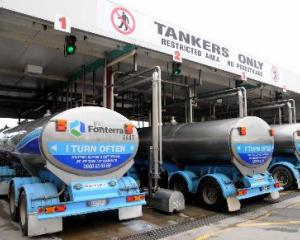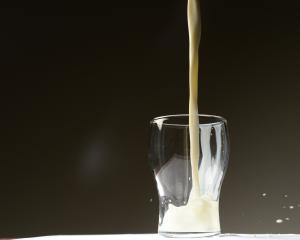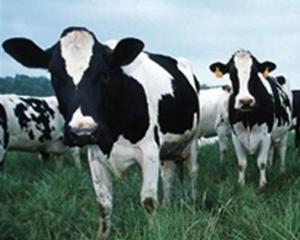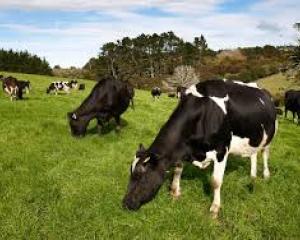Fonterra has achieved its highest-ever monthly revenue through the GlobalDairyTrade auction platform in August, selling 109,664 metric tonnes of product worth $685 million.
The result came despite the recent contamination scare, although industry analysts have previously said a clearer idea of ongoing market impact might not emerge until next month.
Yesterday, Fonterra chief executive Theo Spierings said the past two fortnightly auctions showed ''continued confidence'' in the co-operative's products and strong demand from many of its key markets.
''Our August GDT sales volume was up 27% on the same time last year and revenue more than doubled, up 107%,'' he said.
Meanwhile, a global dairy strategist has cautioned that the United States could emerge as a significant competitor to New Zealand in international export markets.
During a visit to New Zealand, New York-based Rabobank strategist Tim Hunt said the US was reorienting towards the global marketplace, attracted by the allure of better returns across some product categories.
Historically, it had been focused on its own domestic market but US dairy market growth had slowed in recent years, while the commodity price boom had seen international prices rise above domestic US market prices.
The US dairy industry was becoming increasingly cost competitive in export markets due to a combination of its large-scale farm operations, easing feed costs and a lower US dollar, while it was also beginning to align products to suit the global market, Mr Hunt said.
Exports had already begun to steadily grow, with milk powder increasing from about 300,000 tonnes in 2007 to 500,000 tonnes in 2012, and cheese exports going from about 100,000 tonnes to more than 250,000 tonnes in the same period.
However, there were obstacles to overcome. The US dairy industry was not aligned to the requirements of exporting dairy - ''essentially they have the wrong plants and the make the wrong products for global market exports'' - and US regulation made exporting hard.
There were also market access and customer relationship issues. However, progress was being made, he said.
With New Zealand largely having lost its cost of production advantage in world dairy markets, it would be increasingly likely to ''compete head to head'' with the US in coming years.
Maintaining New Zealand's edge in post-farmgate processing and marketing would be ''crucial'', Mr Hunt said.
In the latest ASB Commodities Weekly, Prof William Bailey, from the department of agriculture at Western Illinois University, said milk production in the US remained higher than many expected.
A recent milk production from the US Department of Agriculture showed total milk production was more than 1% higher for July than for July last year.






